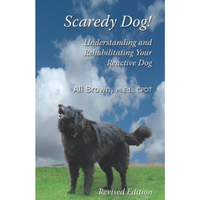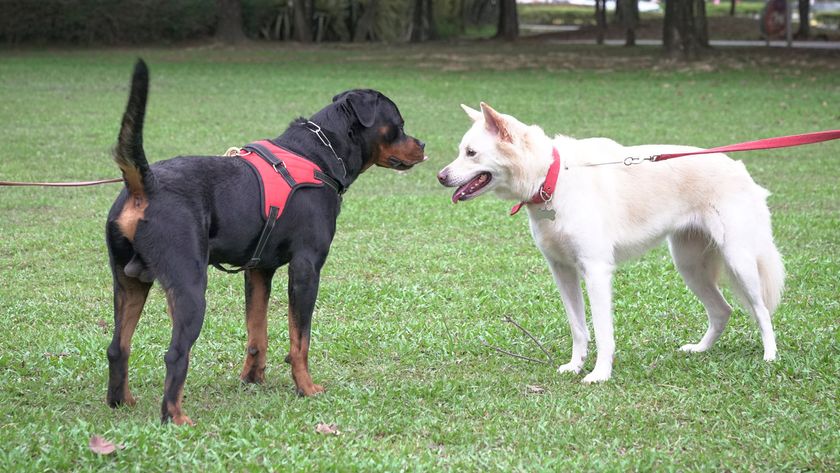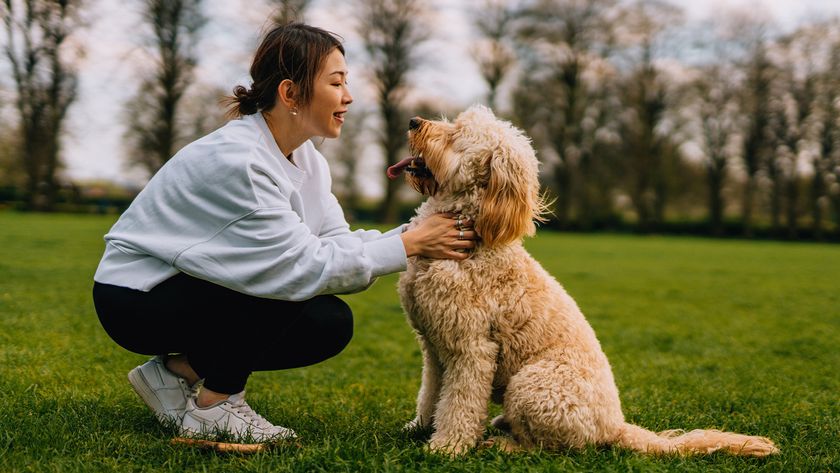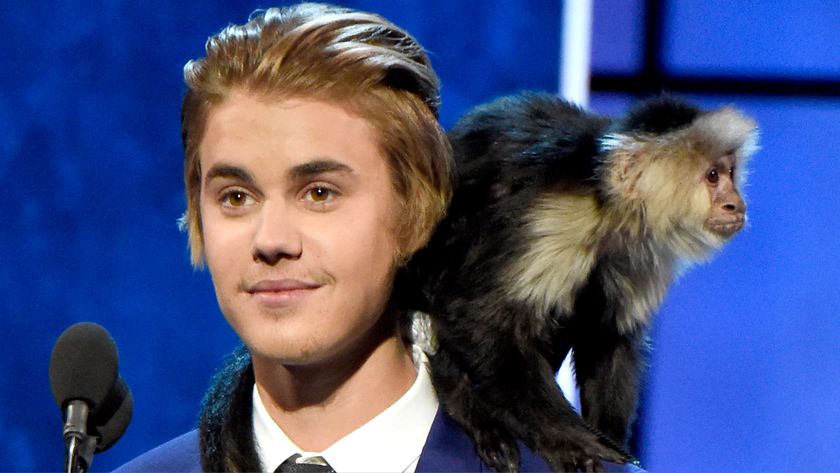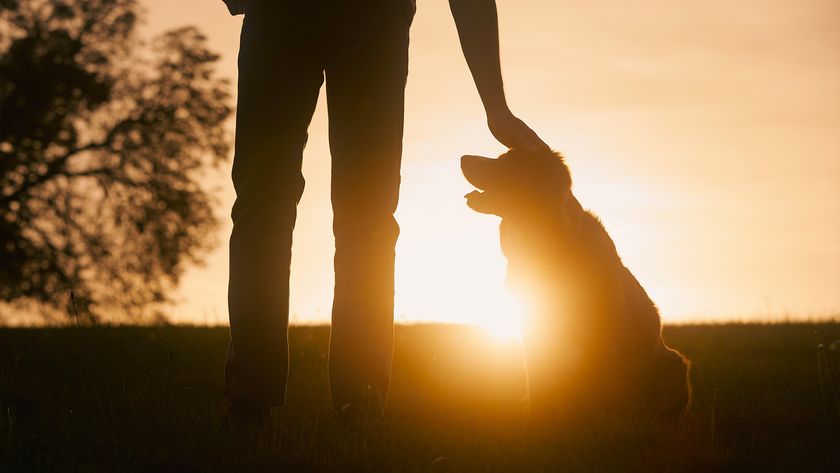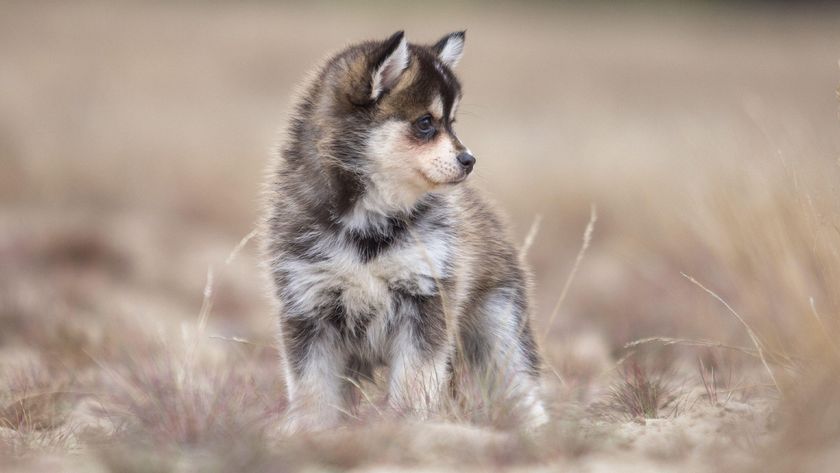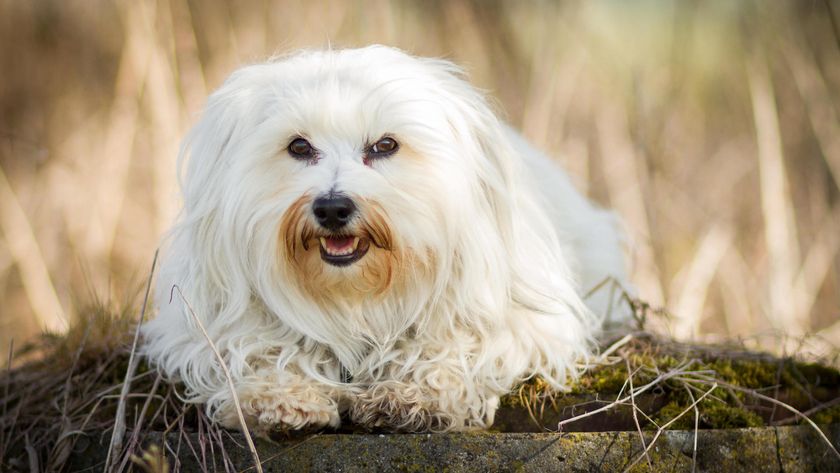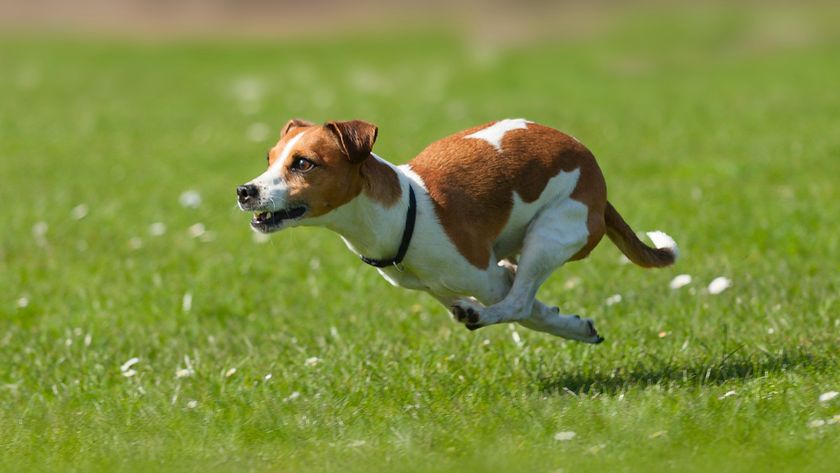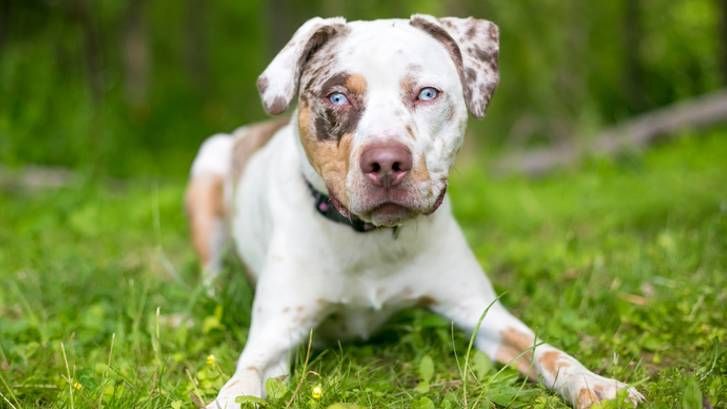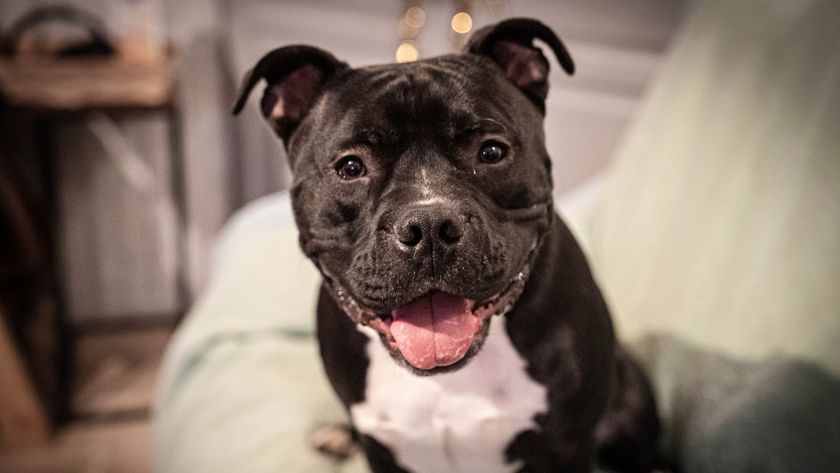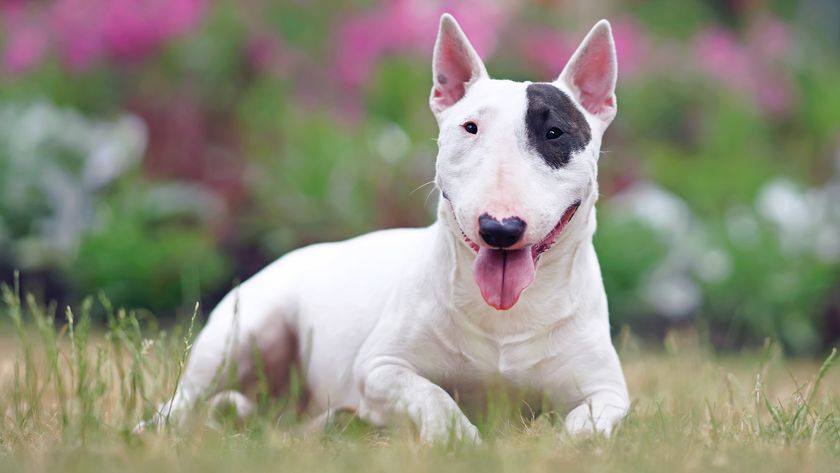Got a reactive dog? Trainer warns of 3 common mistakes you should never make
My lack of understanding had caused my pup’s reactive behavior to worsen
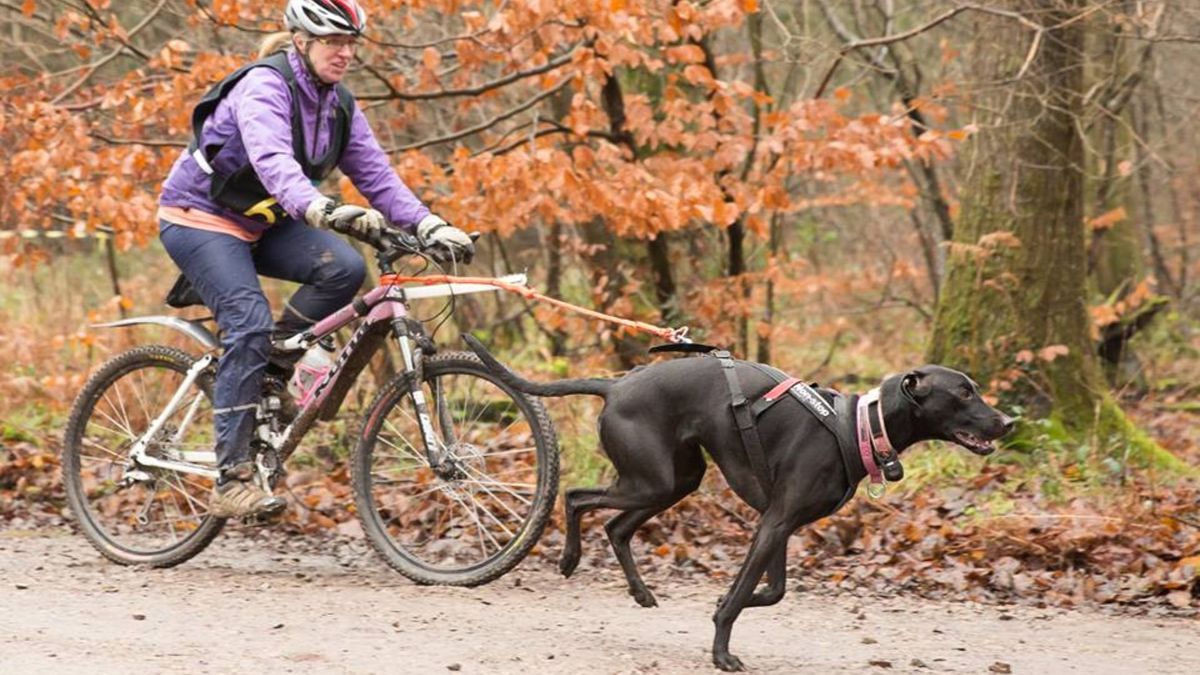
Dog reactivity is an emotive subject that people often mistake for aggression. A dog is classed as reactive when it has an extreme reaction to a stimulus, such as a loud noise, another person, or a dog.
Every dog is different, but typically, reactive dogs become physically frantic. They may bark, lunge or growl and have raised ears and hackles.
I rescued Poppy, a eight-month-old Weimaraner cross, from a dog charity. We had three other dogs at the time. She was a large dog and was a handful by 14 months old. The first time she reacted to another dog, it was dramatic and I had trouble holding her.
Poppy reacted to anyone up to around 300yds away. I couldn’t let her off-leash on the trails unless I could see ahead. I’d shared my life with multiple dogs, who had all been sociable and calm. Poppy’s reactivity worsened over time, and walking four dogs became impossible.
After a year of battling with the behavior, Poppy pulled me over onto a concrete path, and I broke three ribs. While recovering, I searched online for dog behaviorist training and studied with Sarah Whitehead. I was heartbroken when I realized I had prolonged Poppy’s reactivity by not understanding her response, which was fear-based.
What I now know is that reactivity in dogs is curable – and it’s certainly not aggression. Most of the issues are because we respond inappropriately to the behavior. I now work with reactive dogs and have never met one as bad as Poppy.
Mistakes I made with my reactive dog
Here's are the worst mistakes I made with Poppy:
PetsRadar Newsletter
Get the best advice, tips and top tech for your beloved Pets
1. Blaming the dog
Instead of understanding why she reacted so violently, I blamed Poppy for being a “naughty” dog and did not look to myself as the reason her behavior wasn’t improving.
When I saw a person out with a dog, I felt stressed. Of course, Poppy picked up on my tension.
What I did differently after qualifying as a dog behaviorist:
I started walking Poppy alone so I could focus on her. My proudest moment was the first time I stayed calm.
In a happy voice, I said, “This way, Poppy”, and turned to walk back the other way before she could react. Calmly removing a reactive dog from the trigger is the first essential step in behavior management.
I often tell clients that story because Poppy looked up at me that day, and I swear if that dog could have spoken, she would have said, “Thanks, Mum!”
Progress was fast when I changed my behavior and stopped expecting Poppy to do all the work.
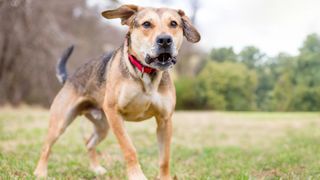
2. Putting my dog in situations that made her react
I mistakenly thought that exposing Poppy to what she reacted to would desensitize her, but the opposite was true. In dog behavior, this is known as flooding and is inadvisable for training dogs.
What I did differently after qualifying as a dog behaviorist:
Instead of forcing Pops to face her fears, I removed her from the scene. I rewarded calm behavior and gradually shortened the trigger distance.
I would stop after a short distance, let her look and give her a treat if she didn’t react. I learned to observe her body language so I could move away if she looked concerned
3. Feeling embarrassed
I was so embarrassed by my dog’s reactive behavior. People labelled her aggressive, which was far from the truth. Before I qualified as a behaviorist, I used to try to explain Poppy’s reactions and respond to people's comments.
What I did differently after qualifying as a dog behaviorist:
I stopped apologizing for my dog’s behavior! I focused on protecting Poppy, which often meant I ignored people when they made comments. I know that doesn't sound polite, but helping Poppy was my top priority.
It’s natural to feel embarrassed by a lunging, barking dog, but once you understand that most reactivity is fear-based, you can do whatever you need to help your dog.
Scaredy Dog!: Understanding & Rehabilitating Your Reactive Dog | Amazon
One of the best books I read during training was Scaredy Dog by Ali Brown. It teaches the basics of managing and rehabilitating a reactive dog. The simple techniques are easy to follow, even for novice dog owners.
My top tips for training a reactive dog
I lost Poppy in 2021. She was my greatest teacher and became a confident, well-balanced dog. Indeed, people used to comment on how calm she was!
Here are a few tips to help you rehabilitate a reactive dog.
- Stay calm: When you are calm, the less likely your dog is to have an episode.
- Talk less: Reactive dogs respond to energy rather than words. Our chatter becomes like white noise to a reactive dog.
- Move away from the trigger: Before your dog can react, turn and walk the other way. Stop after a short distance. Ask your dog to sit and let your furry pal look back at the trigger.
- Teach a “look” command: Hold tasty treats in your hand but close your fist. Your dog will try and get the treats. If your fur buddy stops, say “yes” and give them a treat. Next time, wait for your dog to look at your face and reward. Once your woofer has mastered this stage, add a “look” vocal command.
- Teach a sit command: Sit and down are calming behaviors. I taught Poppy to sit when I stopped walking. It automatically dials down the reactivity. Practice on walks until it becomes a habit for your dog to sit when you stop.
These are simple tips; there is more to rehabilitating a reactive dog, but they are a positive start to helping your dog.
Found this helpful? Read: Owning a reactive dog is hard. Here's how I navigated the social challenges with my pooch or How to calm a reactive dog.

Jan is a dog behaviorist and writer living in the Cotswolds, UK. She has shared her life with dogs for over fifty years and is fascinated by behavior. She enjoys helping people better understand their dogs to develop a deep bond and enjoy time together. Jan particularly enjoys working with impulsive and reactive dogs as her legacy from helping Poppy, her rescue Weimaraner cross overcome fear reactivity.
Edited by Megan Milstead.
Recent updates
This page was last updated in March 2025 by Jan Barley.

Jan is a dog behaviorist and writer living in the Cotswolds, UK. She has shared her life with dogs for over fifty years and is fascinated by behavior. She enjoys helping people better understand their dogs to develop a deep bond and enjoy time together. Jan particularly enjoys working with impulsive and reactive dogs as her legacy from helping Poppy, her rescue Weimaraner cross overcome fear reactivity.
